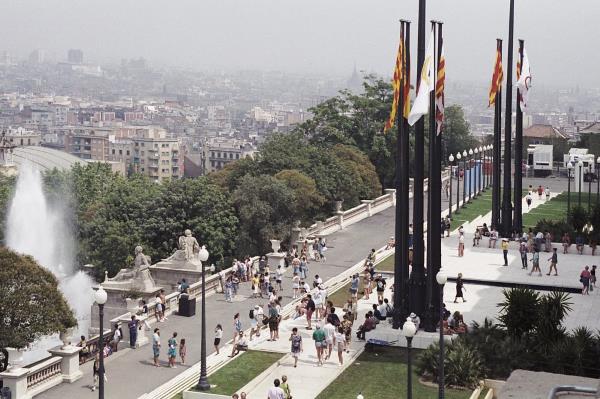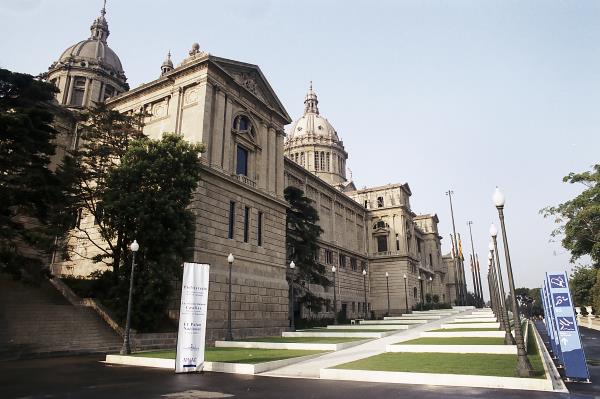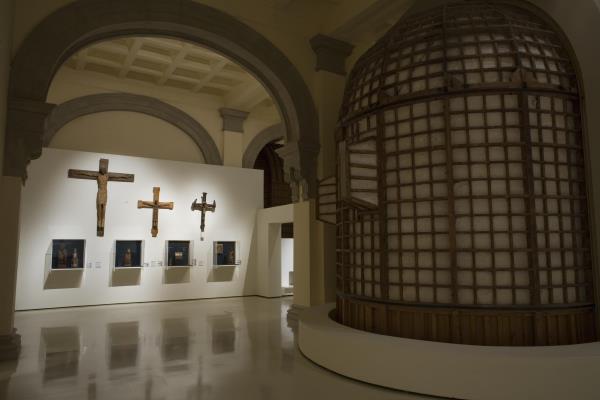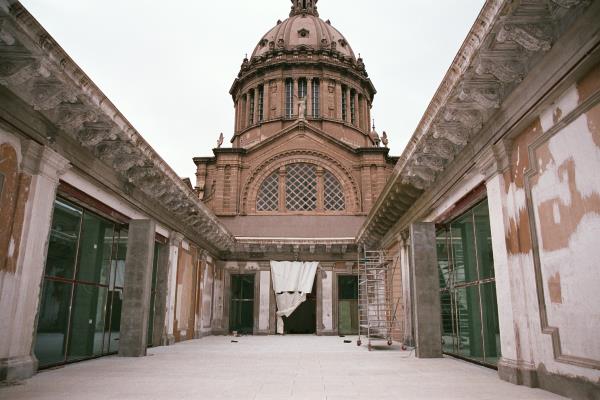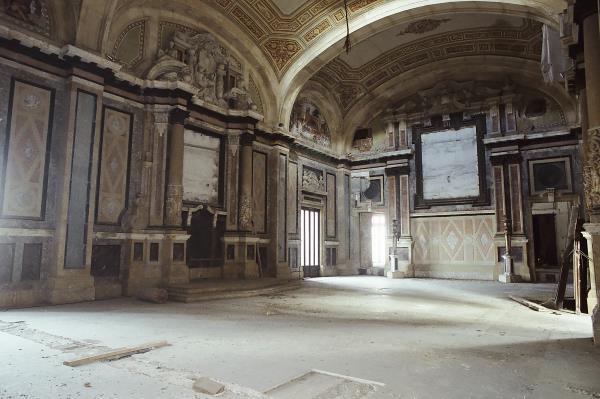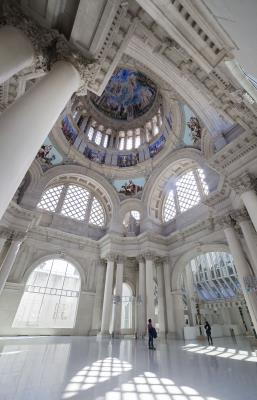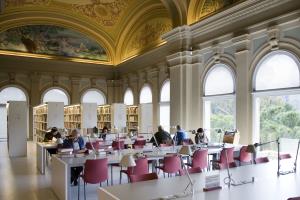Montse Gumà and Sandra Esteban
in collaboration with Marta Mérida
During the Spanish Civil War, the Palau Nacional was evacuated and the works moved to Olot and Darnius. In 1937 some pieces travelled to Paris to form part of an exhibition of Catalan medieval art. Once the conflict had come to an end, in 1939, they would return to the place they had come from. On the ground floor of the Palau the Romanesque, Gothic, Renaissance and Baroque works returned.
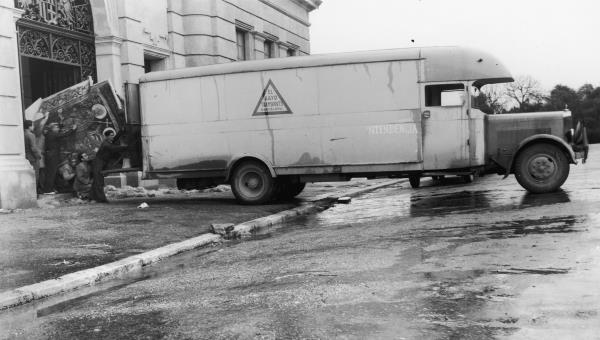
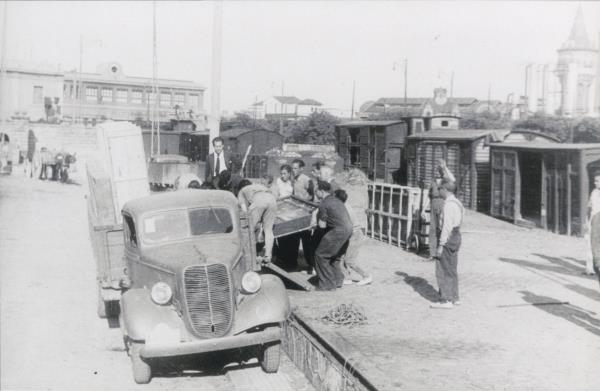
Because of the damage that the roof suffered during the war, it was considered convenient to remove the collection of 19th and 20th century paintings and sculptures, which had once again occupied the top floor. This collection was moved to the Ciutadella Park. At this point the gradual degradation of the Palace began, which, despite some reforms in the 1960s, 70s and 80s, was starting to deteriorate.
In 1966 the Museum of Ceramics was installed on the first floor which was reformed in 1979. In 1973, a new presentation was opened of the Romanesque collection, in 1981 the Gothic collection was changed, and in 1986, the Renaissance and Baroque was also changed. Added to this process of degradation of the building was the fact of the uncertainty regarding the future of the museum.
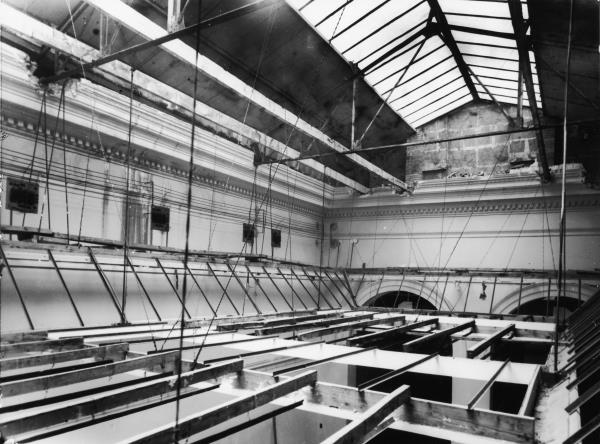
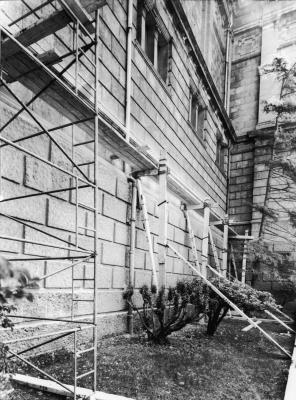
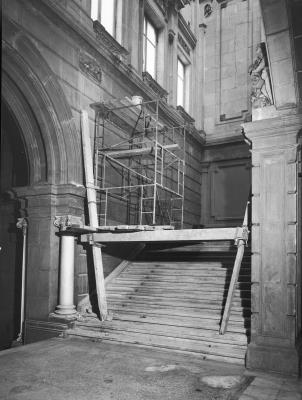
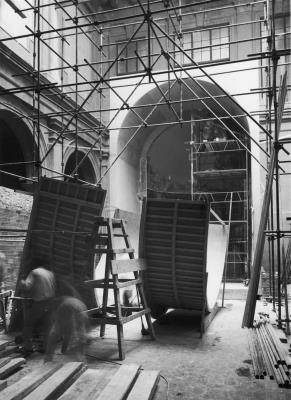
In May 1985, the Museums Plan for the city of Barcelona was approved, which consolidated the Palau Nacional as the venue for the major museum of Catalan art, as it had been in the 1930s.
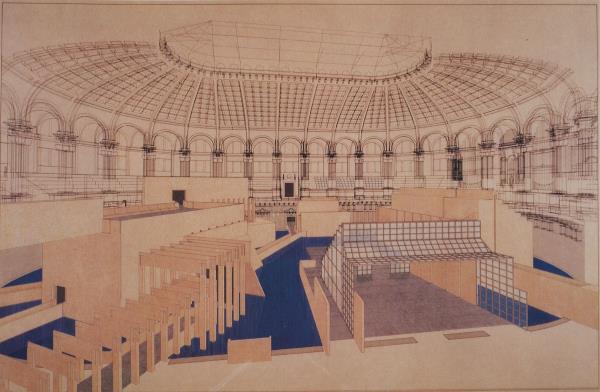
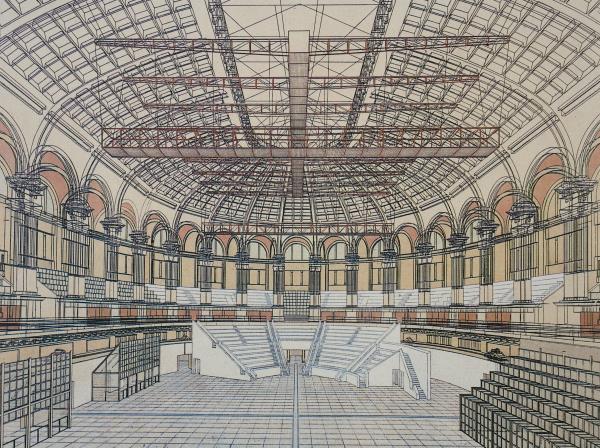
In 1985 the project of refurbishment of the Palau Nacional was commissioned to Gae Aulenti and the museological project was commissioned to Joan Sureda. The draft project and the basic architectural project by Gae Aulenti and Enric Steegman proposed some controversial ideas that many lcoals will remember: the use of the Sala Oval to locate cubicles with some representative paintings, the demolition of the staircase of honour, the installation of a pond in the Sala Oval itself, etc. On June 6th 1990, the first phase began of the rehabilitation works of the Palau Nacional.
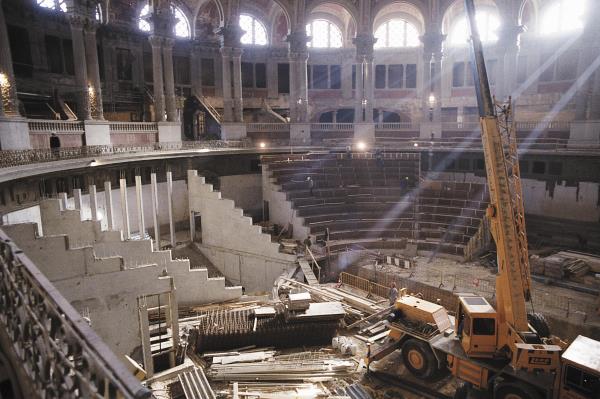
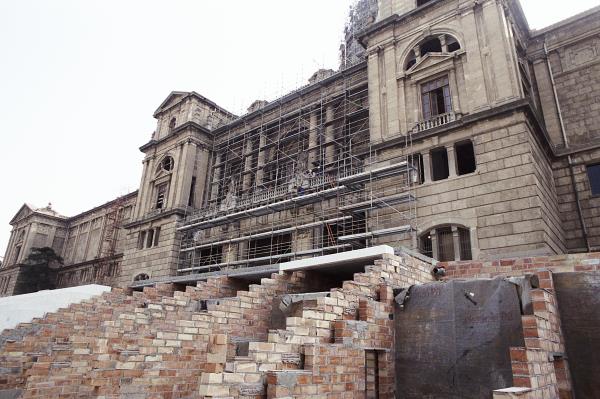

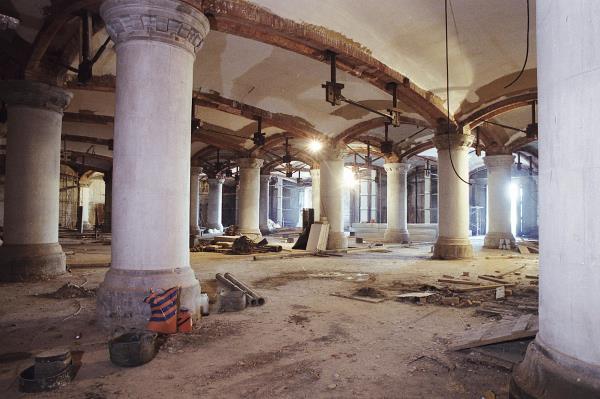
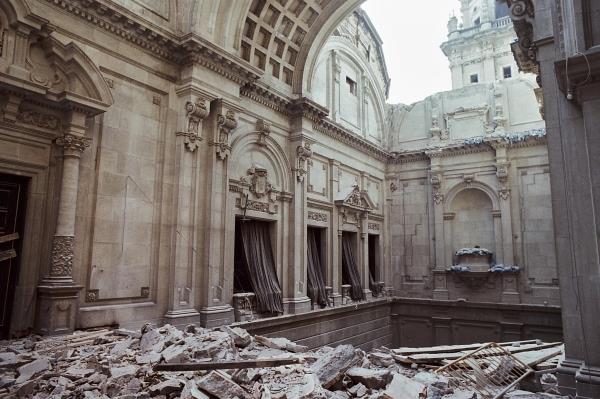
After two years of being closed, in July 1992, coinciding with the Olympic Games of the city of Barcelona, the Palau Nacional reopened to the public: the rehabilitation of the Sala Oval could be seen, accompanied by the consolidation and partial structural refurbishment of the building and of the rehabilitation of two rooms that would host two temporary exhibitions: the Prefiguració del Museu Nacional d’Art de Catalunya (Foreshadowing MNAC) and the Raimon Casellas Collection. At the same time, the accesses to the building were improved, with the construction of the escalators, and the surroundings, with gardens created in some areas and a car park.
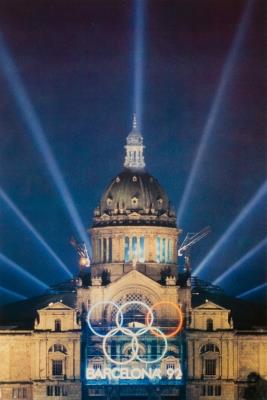
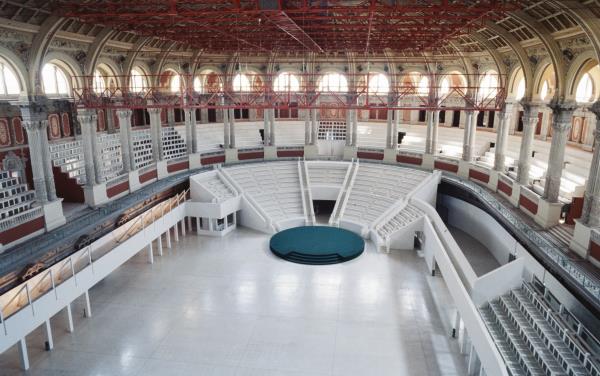
In December 1995, the installation once again of the Romanesque Art Collection represented the reopening of the museum to the public. The museum project was basically chronological and stylistic. Works of different techniques illustrated the evolution of styles from the 11th to 13th centuries in Catalonia. The discourse was enriched with specific fields that explained technical, formal and iconographic aspects.
In July 1997, with the inauguration of the new presentation of the Gothic Art Collection, which had been closed to the public since 1990, the arrangement of the ground floor of the building was completed and the opening to the public of the medieval art collection of the museum. In this space, the art of the Renaissance was also included. The museological discourse, conditioned by the formation of the collection, responds to the aim of showing Catalan artistic expression and of the territories most related culturally with Catalonia.
In March 2002, the architectural and museography works began, directed by Gae Aulenti and Josep Benedito, which would culminate with the rehabilitation of the building and the arrangement of the whole of the first floor to host the Baroque art and Modern art, and the part destined to the future offices of the museum.
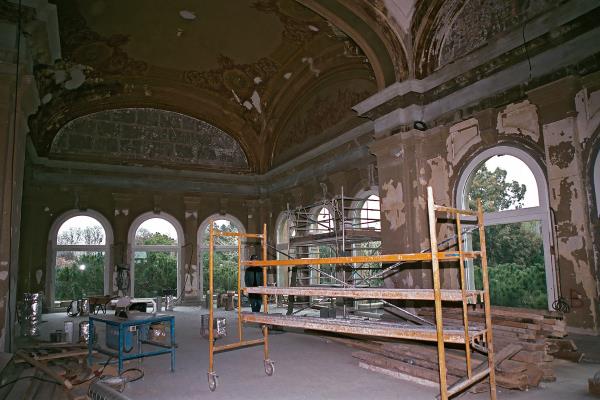
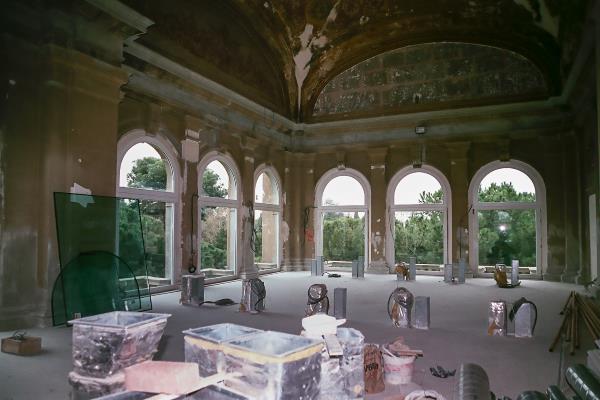
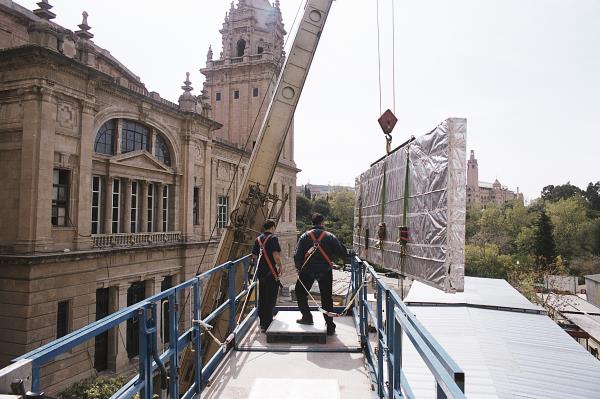
In December 2004, the refurbishment works of the Palau Nacional were finished. The Numismatic Cabinet of Catalonia was transferred and installed there, as well as the General Library of the History of Art and the Modern Art collection. In this moment, the heritage collection of the museum is made up of all the arts: sculpture, paintings, object arts, numismatic and medals, drawings, prints, posters and photography, and the collections that configure a global museological discourse of Catalan art, from the first manifestations of Romanesque until the 1940s in the 20th century, or until the present day in terms of photography. Furthermore, it is compared with international art whenever possible. It is also worth highlighting the series of 50 panels from the dance hall of the residence of Sir Philip Sassoon, in Park Lane (London), the work of Josep Maria Sert, in a small room annexed to the Sala Oval. This was when the offices were also installed in the building of the Palau Nacional.
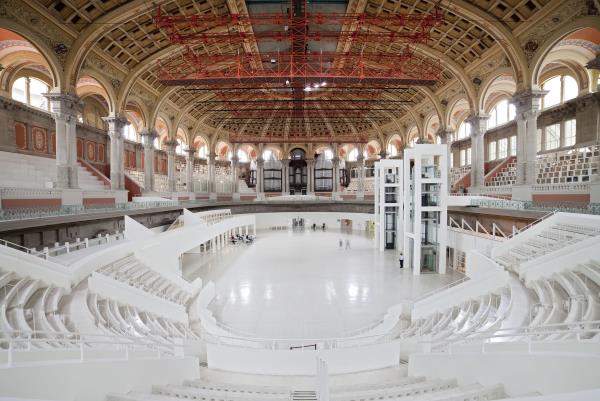
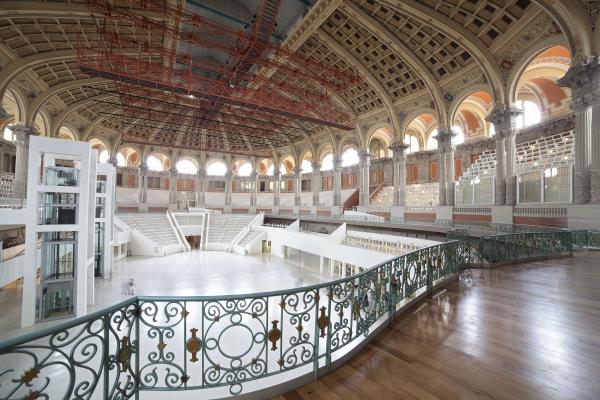

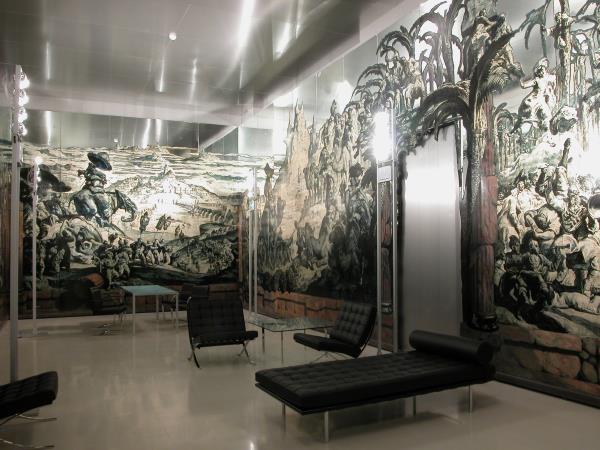
In May 2010, a new remodelling of the Gothic Art Room was inaugurated. In that moment we were pioneers in the Spanish state in terms of the use of presence detectors for the control of the lighting.

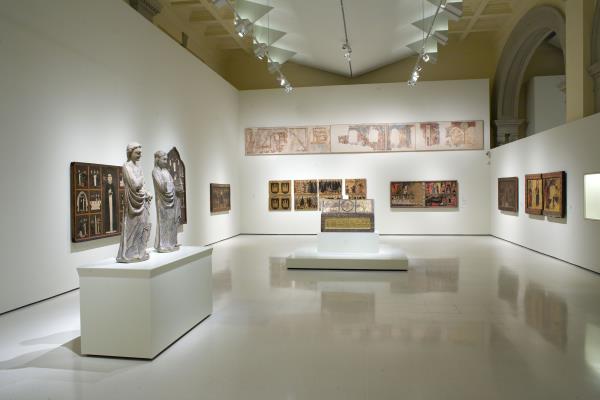
In June 2011, the refurbishment of the Romanesque Art Room was inaugurated.
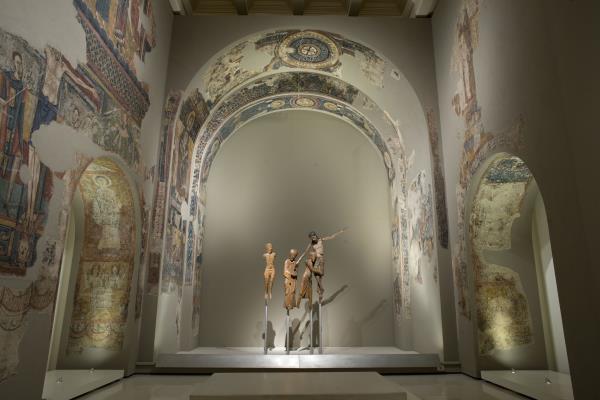
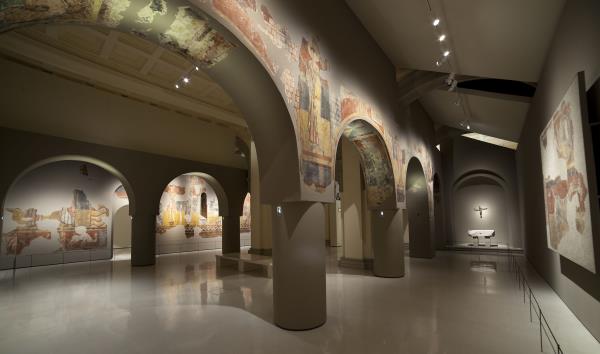
In 2013, it would now be the vestibule’s turn, so as to improve the reception of the visitors, which, at the same time, won a new space that until then had not been open to the public: the roof terraces-viewpoint, that offered a panoramic view of 360º over the city of Barcelona, and allowed architectural details and various corners to be discovered of the Palau that until that moment had been unknown.

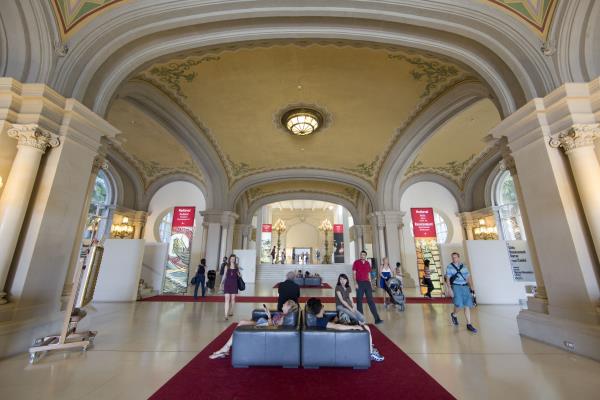

The final stop on this long tour of the Palau Nacional, filled with history, of vicissitudes and experiences, was in September 2014, when the spaces of the first floor were renewed so as to accommodate the modern art collection. This was also an opportunity to install there energy saving measures: LED illumination, an alternative lighting system for when the rooms were not open to the public, so as to be able to carry out maintenance, cleaning and surveillance tasks with the minimum essential lighting, and presence detectors, amongst others. At the same time, these measures and a system of energy management, have been installed in the remaining rooms of the museum. In this respect, here are some figures regarding this latest renovation: 4,000 m2 of exhibition space, 2,000 works have been moved throughout the process, among works that have changed their location, new acquisitions, works which have come out of the reserves and other works that have returned, more than 1,350 works exhibited, 260 artists, 4 ambits (distributed in 31 sections) and 1 epilogue.
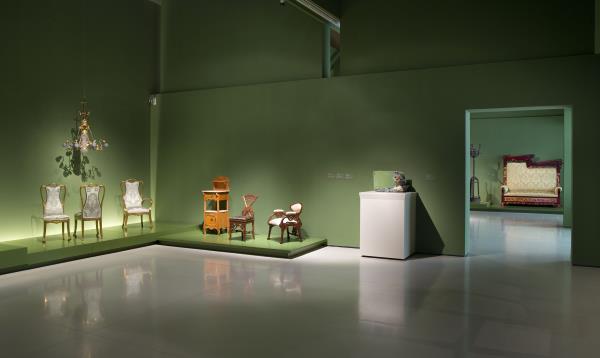
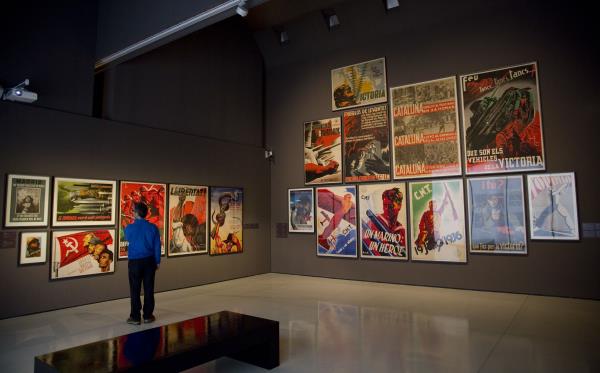
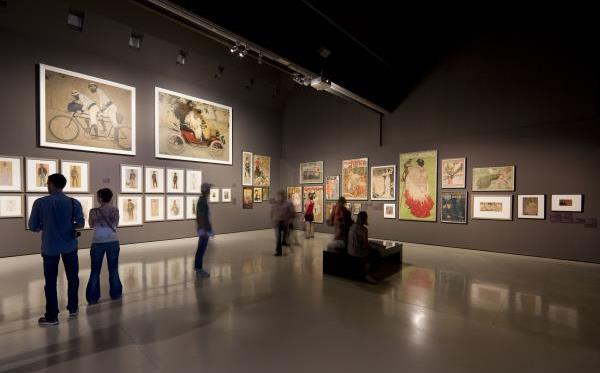
But we’re not stopping here, as halfway through next year we will continue in this path to achieve the sustainability of this major building that already forms part of the iconography of Barcelona and our most immediate history. We have planned to remodel the presentation of the Renaissance and Baroque art and to install this series of measures aimed at achieving energy savings and for taking care of the environment.
Recommended links
A museum you’ve never seen! The renewed Modern Art collection
A museum more ecological and more economic: new installations in Modern Art
Marta Mérida, Sandra Esteban and
Projectes digitals

